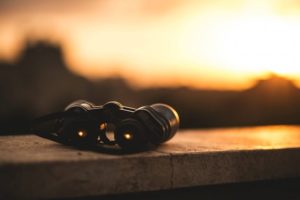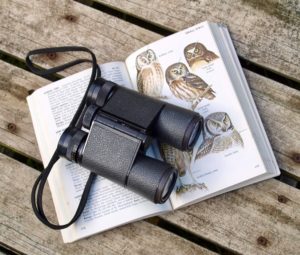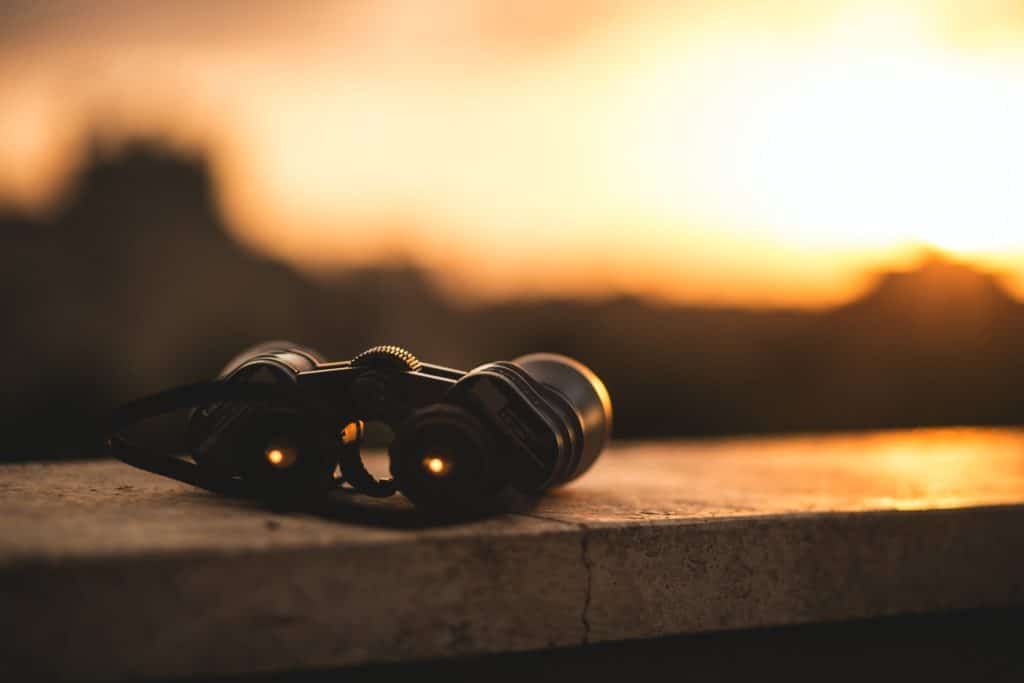Night vision binoculars are very reliable when it comes to nocturnal viewing. Having started off as military equipment in world war II, night vision devices have grown to serve many different functions among security forces and civilians—thanks to technological advancement and significant price reduction.
You can now buy night vision binoculars for sky gazing, night hunting, surveillance, nocturnal bird watching, search and rescue missions, night fishing, and boating, you name it.
The only challenge is to find the ones that meet all your needs—from tens of night vision binoculars brands. This can be overwhelming if you don’t understand much about night vision binoculars. Especially the technical terms. Also, if you’re working within a budget, there’s the temptation of going for the lowest-priced product.
Well, don’t worry, we’re here to help you find the best night vision binoculars under $100. To start with, we’ll break down everything you need to know about night vision binoculars, then give you a detailed buyer’s guide before listing our top 10 night vision binoculars reviews. To go to our best pick immediately, it’s the Ceagleeye 10x42 Binoculars .
If you want a quick scan of everything we’re reviewing today, here are all our selections for the best binoculars with night vision under $100:
- Ceagleeye 10x42 Binoculars Best Overall
- Coolife Night Vision Goggles Binoculars Runners Up
- Hike Crew Digital Night Vision Binoculars Best Digital
- Jstoon Digital Night Vision Monocular Best Compact
- Binotech 12x42 Binoculars for Adults Best Price
- CANIS LATRANS Digital Night Vision Monoculars Best Value
- Monocular Telescope With Smartphone Holder Best Telescope
- No products found. Best Performance
- Pankoo 40x60 Monocular Best Optical Features
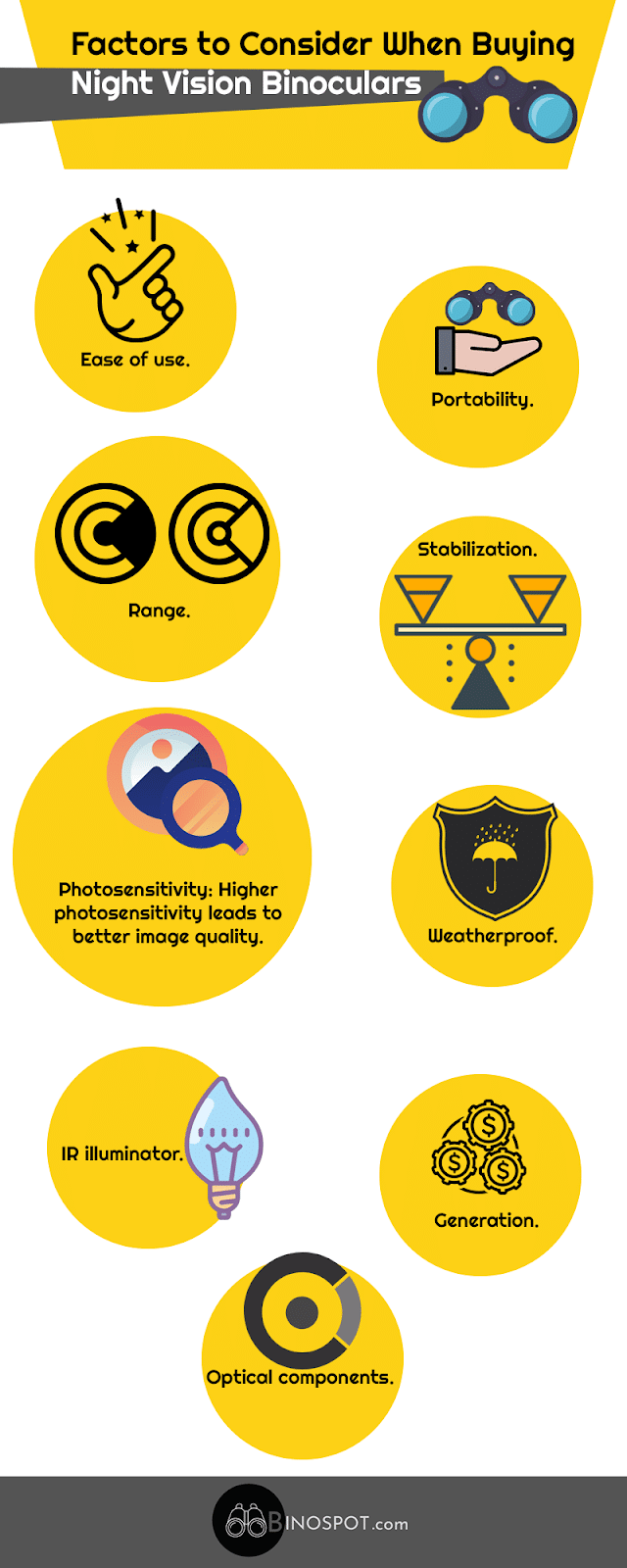
What Are Night Vision Devices?
These are electro-optical devices that enhance vision in environments with little to no lighting. They mainly perform these three functions:
- Detection: Enable you to detect an object in low lighting conditions.
- Recognition: Recognize an image in limited lighting.
- Identification: Identify distinguishing features of an image in low light.
Different Types of Night Vision Devices
Night vision devices fall under different groups depending on their appearance and use. These are:
Night Vision Monoculars
This single eyepiece tube-like night vision device features one objective lens with very low magnification (between 1x to 3x). However, some manufacturers do produce monoculars with higher magnification power. It’s more compact than the other devices, and you can hold it in one hand or attach it to a helmet.
Night Vision Binoculars
Binoculars consist of two tubes with eyepieces—each of them featuring an objective lens. It’s like having two monoculars joined to form one device. This allows you to use both your eyes and results in better depth in your night vision since each eye has a different viewing angle.
Night Vision Goggles
These are just monoculars and binoculars that you can mount to headgear to allow hands-free usage.
Night Vision Scopes
Scopes are also one eyepiece night vision optics, just like monoculars. You can use them as stand-alones or mount them on rifles for targeting. Their narrow field of view limits their surveillance capability significantly.
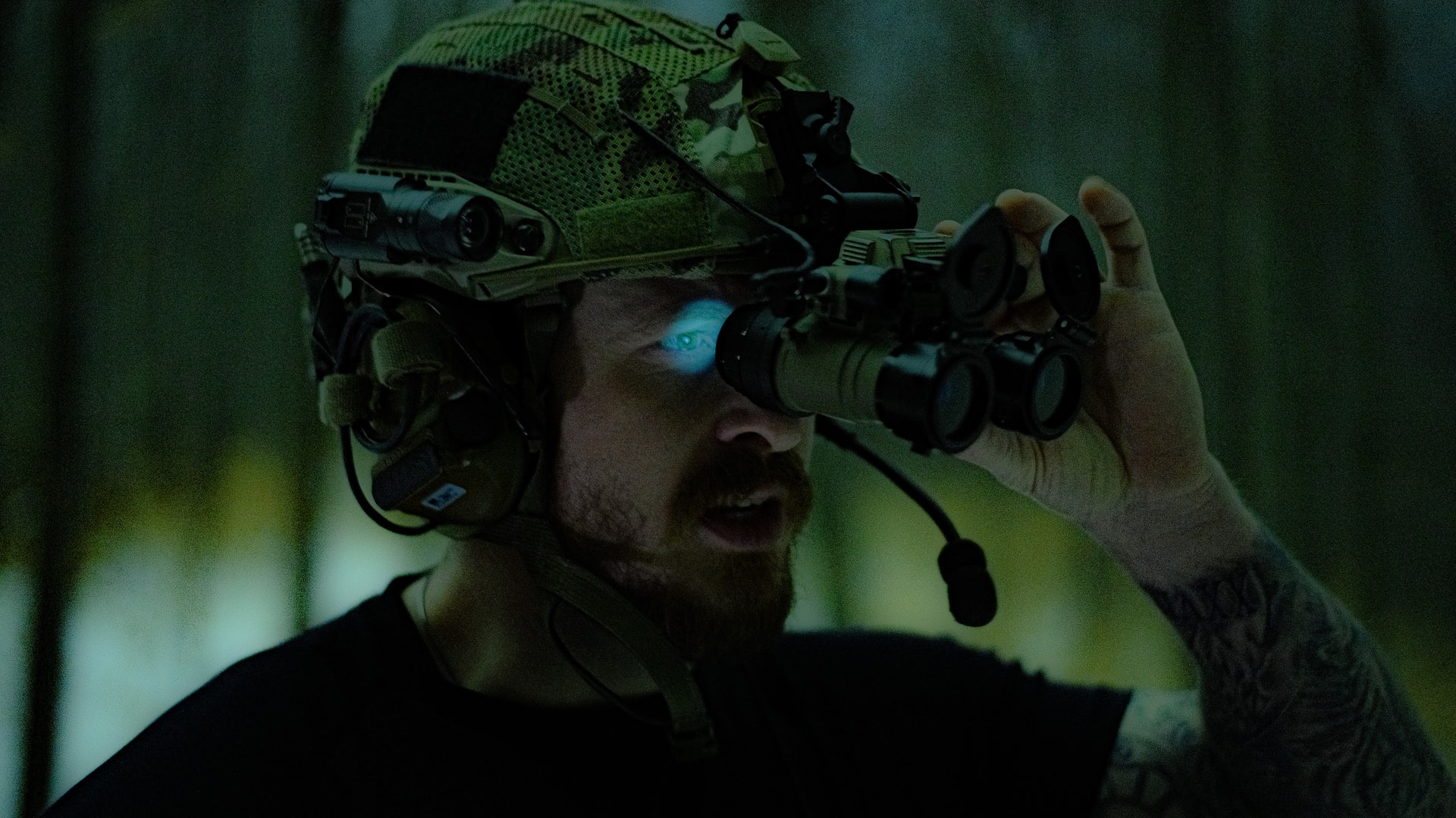
How Do Night Vision Devices Work?
There are three leading technologies that a night vision device utilizes to help you see in low light and pitch dark environments. They are image intensification, active illumination, and thermal imaging. Before we get into details about how they work, let’s look at the light spectrum since it’s the common factor amongst them.
Light and the Infrared Spectrum
First, the energy found in a light wave correlates with its wavelength. The shortest wavelengths possess the highest energy and vice versa. As far as visible light goes, violet has the highest energy while red contains the least.
Infrared, on the other hand, is divided into three categories:
- Near-infrared (NIR): This is the closest to visible light. It has wavelengths starting from 0.7 to 1.3 microns.
- Mid-infrared (MIR): Coming in second with wavelengths of 1.3 to 3 microns is mid-IR
- Thermal-infrared (TIR): This infrared takes up the most significant percentage of the infrared spectrum. Its wavelengths start from 3 microns to 30 plus microns. Unlike the other two that are reflected, thermal-IR comes from the body.
Image Intensification
Image intensification is the most common night vision technology found in low-light monoculars, binoculars, and goggles.
It works by capturing any available light through the objective lens then sending it to the image-intensifier photocathode tube. This battery-powered tube is responsible for turning the photons in the captured light into electrons.
When these electrons pass through the tube, they trigger a release of more electrons by the atoms inside the tube. With the help of a microchannel plate (MCP) found in a vacuum inside the tube, the electrons multiply their number to thousands. This electron release process by the MCP is known as cascaded secondary emission.
At the end of the tube, the electrons come into contact with a phosphor-coated screen. The screen converts the thousands of electrons back to photons (visible light). And, since the electrons maintain the same alignment with their original photons, you end up with the green image associated with night vision optical devices.
This is the image that your eyes view through the ocular lens. It’s much brighter and “intensified” thanks to the multiplication of electrons. From here, you can magnify or focus the image—depending on your device’s features.
The night vision optics using this technology are further divided into generations which we’ll look at in detail below.
Active Illumination
This technology combines image intensification and an active source of illumination under near-infrared (NIR) or shortwave infrared (SWIR) bands.
Most optics that use active illumination come with built-in infrared illuminators or a mounting point where you can install your preferred infrared illuminator. These result in higher resolution images compared to the other technologies.
Thermal Imaging
Thermal imaging technology doesn’t require a source of illumination to produce images. Instead, it utilizes the heat (longwave infrared light ) that objects emit. Warm things give off more infrared; hence they’re more detectable.
A thermal imaging night vision optical device uses detectors (bolometers) or focal plane arrays (FPA) to read and differentiate an object’s temperature and background.
They then use this data to develop a thermal profile (thermogram) of that scene. This will undergo a translation into electric impulses, which then proceeds to the signal-processing phase before the information goes to display.
The intensity of an object’s infrared emission will determine its appearance on the lens or screen of your night vision optic.
It’s very effective in a completely dark, rainy place or in a light fog. With a suitable thermal imaging device, you can detect objects with temperatures as low as -4 degrees Fahrenheit (-20 degree Celcius) to as high as 3,600 Fahrenheit (2,000 degrees Celcius). Also, it can sense temperature changes of 0.4 degrees Fahrenheit (0.2 degrees Celcius).
There are two types of thermal imaging devices:
- Un-cooled: Detectors in this device function at room temperature. It’s very quiet and activates instantly. It’s the most common.
- Cryogenically cooled: In this system, cooling equipment chills the elements as low as minus 100 degrees Fahrenheit. Save for their bulkiness and complex maintenance, cooled thermal imaging devices produce better images than the un-cooled ones.
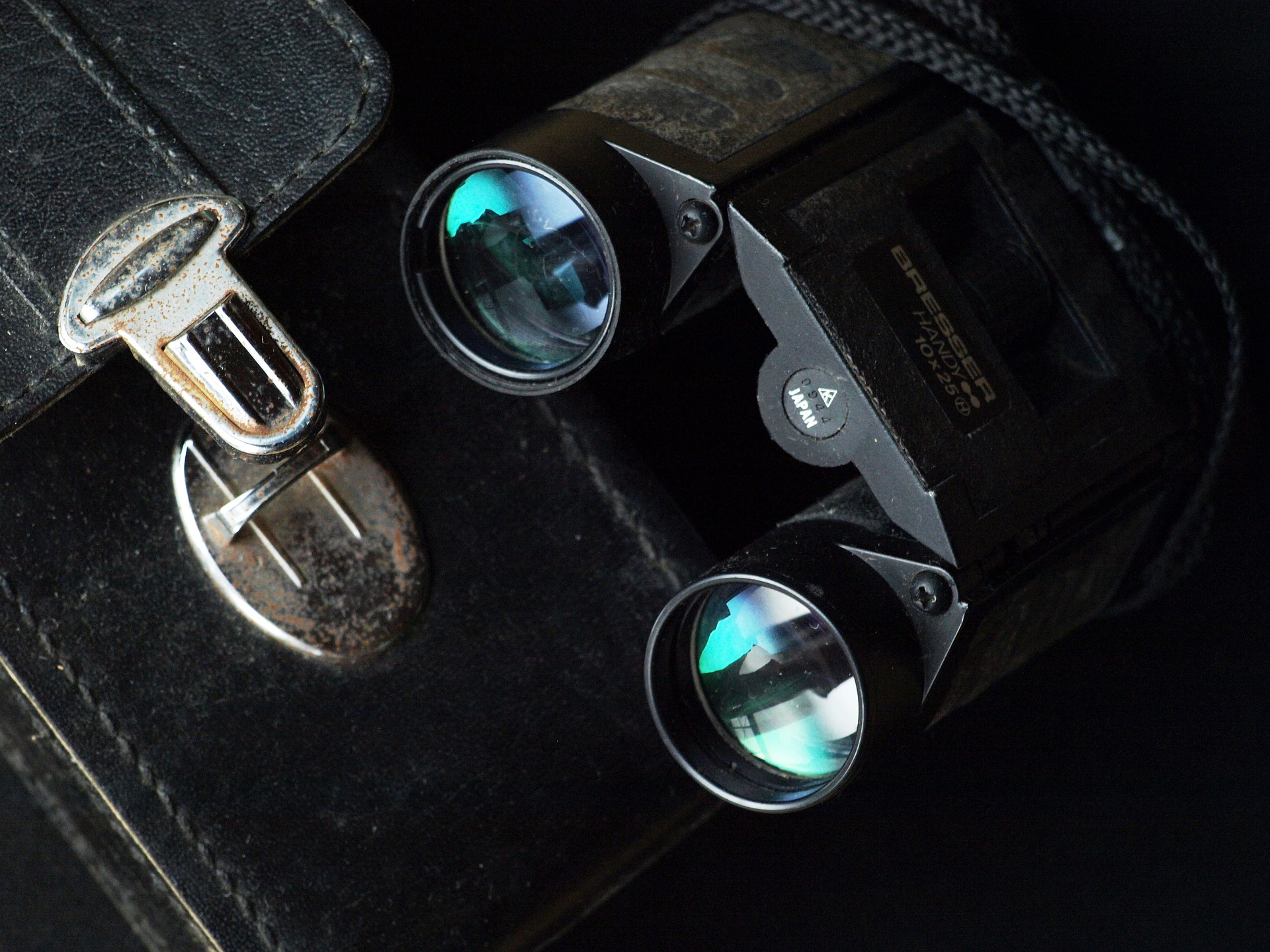
Night Vision Binoculars Buying Guide: Important Considerations
To get the best night vision binoculars for your needs, you must consider a few essential factors. These include:
Ease Of Use
The night vision binoculars, monoculars, or goggles should be easy to operate. It’s hard enough that you’re working in low lighting. So, you should look for a device with simple features, easy-to-master control knobs, ergonomic design, even weight distribution, among other beneficial traits. Even better if it comes with useful accessories.
Controls
Look out for additional controls that can enhance the efficiency of the night vision binoculars. For instance, a brightness and contrast control can further help to adjust your image viewing.
Portability and Maintenance
If you’ll be moving around a lot with the binoculars, it’s important to consider their portability. In this case, compact, lightweight, possibly head-mountable night vision goggles would be perfect. They free up your hands and allows you to move in the dark with minimal limitations and restrictions.
Also, take into account the maintenance requirements of the night vision device. Most of them are very sensitive and need to be looked after properly to maintain their peak performance and boost longevity.
Range
The range of your night vision binoculars is also important—especially if you’re using the optics for surveillance, night hunting, or even nocturnal bird watching. Now, the factors that determine the effective range of your nocturnal optical device include magnification, resolution, and gain (ratio of light output to infrared input).
Be sure to get a device with features that optimize its range capability if you want to see distant objects.
Stabilization
Do the binoculars have a stabilization system to isolate them from movement so that you can enjoy undeterred viewing? There are many different optical stabilizers, from the simple spring and shock absorbers to the digital stabilizers that use a camera’s sensor to instantly correct recorded images.
Photosensitivity
This is the ability to produce a good image or view with minimal illumination. The higher the photosensitivity, the better. Especially in the NIR spectrum, since the energy percentage in NIR at night is much higher.
Legality
Before buying binoculars for night vision, be sure to check your state laws to confirm their legality. Some states prohibit the use of specific night vision devices by civilians.
Weatherproof
Your night vision binoculars should be able to survive the different weather elements and other harsh conditions and still perform optimally. A waterproof housing and lenses, tough and solid body that’s also non-slip are just some of the features to check on the night vision optical device.
IR Illuminators
Considering how useful IR illuminators are in boosting the visibility of images in total darkness, make sure your night vision binoculars have one built-in, or there’s room for an external installation.
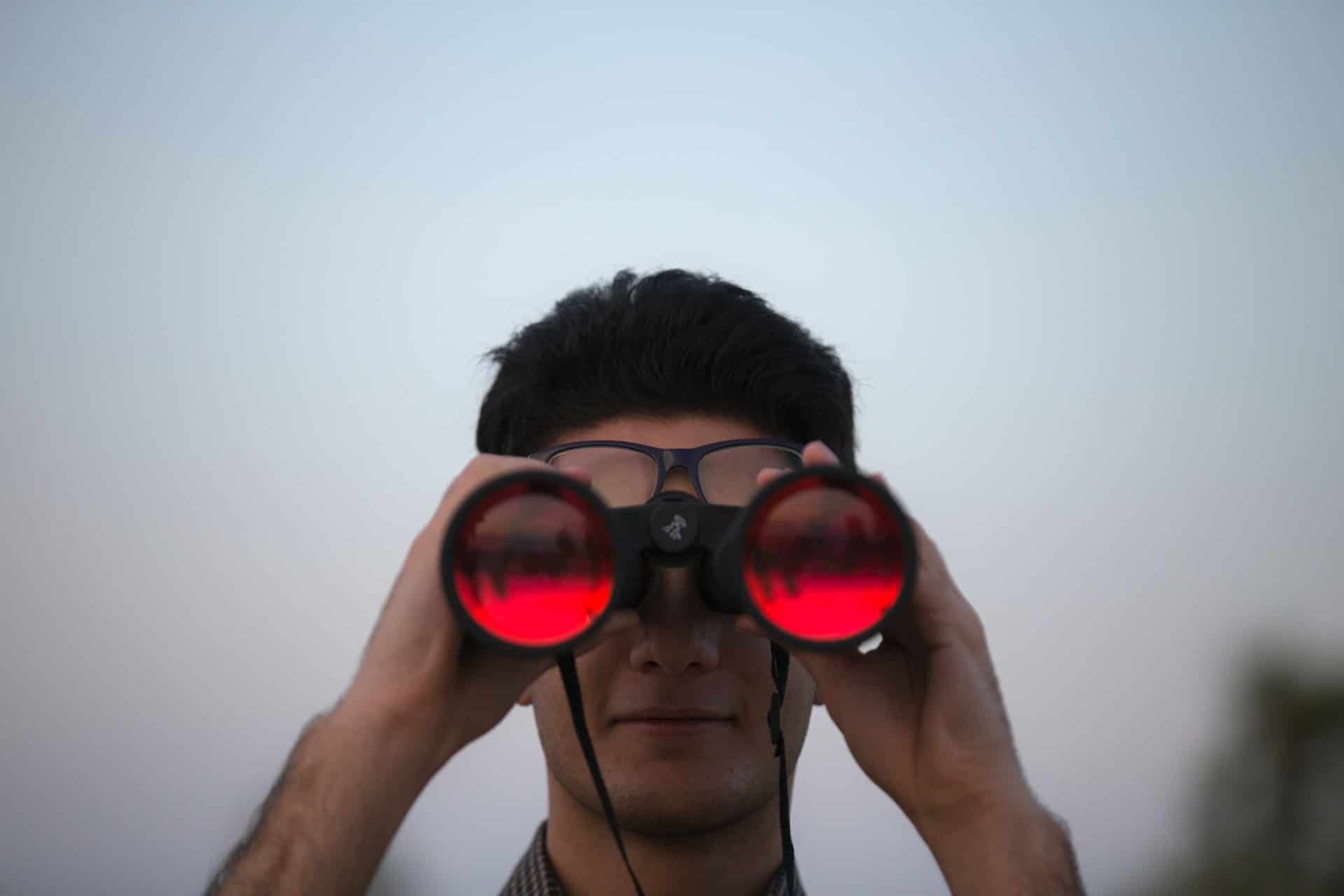
Night Vision Binoculars Generations
Night vision binoculars fall under four different generations (three are active). Their level of complexity and performance rises as you move up. Let’s look at the different generations and their specifications.
Generation 0
These were the first night vision optics, dating their invention and use to world war II. They had active infrared technology where an infrared illuminator is mounted on the NVD. Inside the tube, there’s an anode and a cathode that help to speed up electrons. Unfortunately, this acceleration of electrons distorts images and damages the tube fast.
There’s no more production of the gen 0, night vision optics. The only place you’re likely to come across these pioneers of night vision goggles, monoculars, and binoculars is museums.
Generation 1
The gen 1 night vision devices moved away from the active infrared system to passive infrared. They make use of ambient light from the moon, stars, and surroundings. But, they still use image-intensifier technology with both anode and cathode, just like gen 0 devices.
Other benefits of gen 1 are:
- They offer better performance at close ranges.
- Very affordable.
The drawbacks include:
- Their maximum range is 75 yards.
- They need an infrared illuminator to perform better.
- Low-resolution images with a lot of static.
- Almost one-third of the outer field of view is distorted.
- A short battery life.
- Highly prone to blooming.
- A short life expectancy (1500 hours).
Generation 2
The gen 2 night vision optical devices are a significant upgrade from gen 1 optics. They feature micro-channel plates (MCP) inside the image-intensifier tubes. These help control flow and multiply the electrons that reach the phosphor screen, thus boosting the optic’s gain.
They also have the S-25 photocathodes for increased sensitivity and improved spectral response.
Check out more benefits of the gen 2 below:
- No need for infrared illumination.
- Improved range of 200 yards.
- Clean and bright images.
- Complete field of view.
- Longer life expectancy (3x that of gen 1).
- Long battery life.
- 54 lp/mm resolution.
Some manufacturers have gone a step further and produced the gen 2+ and gen 2+ HD. So, you should watch out for those.
Generation 3
At the moment, the gen 3 night vision devices are the gold standard of low light optical technology. They’re functionally outstanding so that you’ll mainly find them with the military. Also, they cost a lot of money.
The most significant improvement from gen 2 is that their photocathode has gallium arsenide, which does a remarkable job of converting photons to electrons. Plus, their MCP has an ion coating to boost the tube’s lifespan.
More beneficial features and traits of the gen 3 are:
- An upwards of 75 lp/mm resolution.
- Longest visual range (300 yards).
- Best low-lighting performance.
- They don’t need IR illumination.
- 10,000+ hours of life expectancy.
Optical Components
The optical components of a night vision device determine its effectiveness, efficiency, and its overall performance. Here are the ones you should consider:
Magnification
Magnification is simply the binocular’s ability to zoom images closer. For example, a 5x magnification will make images appear five times closer. However, magnification isn’t such a significant factor in the best night vision binoculars, so you’ll find many low light devices with very low magnification power.
Additionally, high magnification is synonymous with a small field of view and instability of the image.
Objective Lens Diameter
The Objective Lens Diameter is the second number on binoculars’ casing (after the magnification). It represents the diameter of the aperture lens (in millimeters). Now, since this is the lens that allows in light, and night vision binoculars need as much light as they can get, its size is critical.
Large objective lens diameter means more light, and more light translates to brighter images. The only problem is that the bigger the aperture lens, the bulkier the optical device.
Field of View
Field of view is the area you’ll be able to see with the binoculars. If you want to see a large area, for say, surveillance, then you should go for a wider field of view.
Exit Pupil
Exit Pupil is the width of the light rays leaving through the ocular lens (in millimeters). To get its actual size, you divide the size of the aperture lens by the device’s magnification power. A large exit pupil leads to brighter images in low light. It has to be bigger than your eye pupil diameter—taking into account the eye pupil widens in low lighting.
Eye Relief
An optical device’s eye relief is the distance from the last surface of your ocular lens within which you can position your eyes and get a complete viewing angle.
If you put your eyes anywhere outside this distance, then your field of view reduces. If you use eyeglasses, then you should consider night vision binoculars with a more extended eye relief.
The Top 9 Best Night Vision Binoculars Under $100
1. Best Overall
Everything about these night vision binoculars spells superior performance and longevity. Starting with their high-quality optical components, down to the ergonomic body design. It features a 42 mm objective lens diameter that’s crucial in allowing enough optimum light transmission to brighten your images. And, since the lenses are fully multi-coated, you get up to 99.6% light transmission.
Its 23mm ocular lens diameter results in a larger field of view (37ft/1,000 yards), which is essential when you want to view a wider region. Not forgetting the 10x magnification and 21mm eye relief. All of which boost up your night vision experience significantly.
You’d be surprised that even with their large-aperture lenses, this night vision device is considerably lightweight. Their non-slip, shock-proof rubber armor helps the binoculars to survive tough elements. They’re definitely built to last.
With an IP7 nitrogen-filled waterproof standard, superior anti-fog coating, and O-ring sealing, you can comfortably use them in wet environments without any risk of water damage.
Lastly, Ceagleeve night vision binoculars are very easy to use and come with a smartphone mount compatible with different smartphone models. This allows you to capture and store everything you view—both still images and video.
Pros
- IP7 waterproof and fog proof too.
- Bright and clear images at night.
- Fully multi-coated lenses.
- Smartphone mountable.
- Good eye relief.
- Strong and durable body.
Cons
- It takes time to master how to use them effectively.
2. Runners Up
At number two, we have one of the most versatile night vision optics. It features a wide range of digital elements that help it to produce clear and bright images in low lighting. To start with, it has a 3W built-in infrared illuminator with a range of 656 ft/200m. The infrared covers seven different levels that you can adjust to depending on the amount of light in the surrounding.
To turn on the infrared illuminator, press the IR+ button or increase IR brightness slowly. There’s a 3x fixed magnification that lets you adjust to the ideal focal length in relation to the position of your target. Digital magnification stands at 4x, and the objective lens is 24mm.
The body build of this digital night vision monocular is sturdy, compact, and ergonomic. Its controls are well-marked and easy to reach while using the device. There’s also a nitrogen feature that helps prevent moisture and dust entry—not forgetting the tripod slot at the bottom for fast and easy mounting.
A 1.5 inch TFT LCD screen allows you to view the images clearly. All image captures and image recordings can go straight to the 32GB micro SD card storage for future viewing or to show to friends and family.
Lastly, you need 5x 1.5v AA alkaline batteries (not included) to power up the monoculars. Sadly, they tend to die fast, especially when the infrared illuminator is ON. You should remember to switch it off while the night vision optic is in storage.
Pros
- Simple and easy to operate.
- Seven levels of infrared illuminator adjustments.
- Bright and crisp images.
- 32 GB storage space.
- Long range.
- Portable.
Cons
- Short battery life
3. Best Digital
Having some of the best digital features around for the price, this night vision optical device provides users with versatile functionality to optimize for different activities.
The binoculars cover up to a 100M viewing range with 2x digital zoom. You can focus on your images using the manual focus wheel and observe every detail on the large crystal clear viewing screen.
There are seven levels of infrared brightness that you can adjust to, depending on the available light ambiance. You’ll hardly miss anything, even as the day progresses from low light to pitch darkness. The control buttons and knobs are easy to reach and well labeled to avoid any confusion.
In case you get tired of carrying it around, you can use the neck strap or tripod mount to provide additional support so that you can continue enjoying long hours of comfortable viewing.
You need 4 AA batteries to power these night vision binoculars. Unfortunately, they die fast. You should consider getting rechargeable batteries to avoid the ongoing cost of new batteries. The other drawback is that, according to customer reviews, the focus button gets stuck a lot.
Pros
- Clear and brighter images.
- IR brightness control.
- Large viewing screen.
- Tripod mountable.
Cons
- Batteries die fast.
- Focus button gets stuck.
4. Best Compact
If you’re looking for a compact digital night vision optical device, then the Jstoon monocular is the perfect match. It has a small body size that you can easily hold with one hand and carry in your pocket. The strong, ergonomic, non-slip body design makes it extremely reliable and durable.
With its 4x digital zoom and 3x optical magnification, you can see objects as far as 650 feet away. Then there’s the 1.5-inch TFT screen that makes it convenient to view photos and videos instantly. That’s before you decide to store them in the extra 32 GB memory to show to your friends and family or transfer them to your computer.
It’s ideal for watching wild animals at night, camping, and surveillance, seeing as it has an enhanced infrared CMOS sensor for fast detection of objects even in pitch dark settings. The large objective lens allows adequate light in to provide bright images. And, thanks to the full multi-coating of the lens, there’s no glare and very little to no light loss.
Manual operation of the focus handwheel and infrared light adjustment feature offers you complete control of your nocturnal viewing experience. All you need to power up this night vision device are a couple of AA batteries. You could go for the rechargeable ones because the infrared illuminator drains them out fast.
The other drawback is its bright backlight that you can’t dim.
Pros
- 32 GB storage for your images and videos.
- Manual focusing.
- Fully multi-coated lens.
- Compact and lightweight.
- Easy to use.
Cons
- Bright backlight.
- Short battery life
5. Best Price
This high-performance night vision optical device includes premium BAK4 prisms to produce sharp and clear images.
They also have 42mm objective lenses with full multi-layer optic coating to curb glare and light loss and allow in a large amount of light.
There’s also its water- and dust-resistance design that allows it to function efficiently in harsh environments. The slip-resistance rubber armor offers a comfortable hold and cushions the binoculars against hard falls. This is an ideal low-light optical device for nocturnal bird watching, night hunting, surveillance, and general outdoor exploration.
It comes with a smartphone adapter that allows you to attach any smartphone model for capturing images and recording videos to view later or show your friends. The simple design of its body makes it comfortable and easy to use. This is important in low light where you can hardly see much.
The only problem is that it’s not effective in complete darkness.
Pros
- Sharp and clear images in low light.
- Simple and reliable smartphone mount.
- Water-resistant and dust-proof.
- Premium BAK4 prism.
Cons
- Doesn’t work well in complete total darkness.
6. Best Value
Next on the list is yet another pair of night vision monoculars that comes complete with 10x optical zoom and 4x digital zoom, a 25mm aperture lens diameter, and a 1.5-inches LCD. The device offers excellent value to nighttime hunters, bird watchers, fishing and camping.
You need 5 AA batteries to power it up (not included), and the IR illumination technology will make sure you can see images as far as 200M away. There are seven distinct 3W IR modes that you can adjust to depending on the outdoor lighting ambiance.
It’s a compact, easy-to-use monocular that’s built to last. You can hold it in one hand for extended viewing periods without feeling any strain. Plus, having an IP56 water resistance means you don’t have to worry about water damage.
Lastly, if you enjoy keeping memories of your night viewing experience, the CANIS LANTRANS digital night vision offers you 32 GB of storage space to instantly store every captured image or video. You can then use the playback mode to view the files on the built-in LCD screen.
Sadly, video recording has no sound recording feature. If you need sound, you might have to record with your phone and lay it over when editing.
Pros
- IR illumination produces clear images.
- Compact and easy to use.
- 32 GB storage for your images and videos.
- IP56 water resistance.
Cons
- No sound for video recording.
7. Best Telescope
Coming in as the best night vision telescope is the Baulanna low light optical device. It features a BAK4 prism, fully multi-coated lenses, and a wide aperture diameter. All of these combine to ensure adequate lighting to produce bright and crisp images in low-light conditions.
The body has a simple, easy-to-use, ergonomic design that you can carry around comfortably. This makes for an enjoyable viewing experience, even in rugged environments.
It’s also waterproof and anti-fog, so you don’t have to worry about using it in wet weather conditions. Plus, the O-ring seal prevents the entry of dust and other foreign objects.
With its 40mm objective lens, you have a wider field of view that lets you enjoy nocturnal bird watching, night hunting, sky gazing, and surveillance too.
This monoculars telescope allows for smartphone mounting, which enables you to capture and record your views. It’s compatible with different smartphones, and installation is straightforward.
For those who wear eyeglasses, you can adjust the eyecups to your comfort to enjoy the viewing experience.
The only challenge with the device is that part of the phone adapter covers some camera sensors once set up.
Pros
- Compact and lightweight.
- Adjustable eyecups.
- Water-proof and anti-fog.
- Smartphone mounting.
- Fully multi-coated lenses.
Cons
- Phone adapter might cover camera sensors when mounted.
.
8. Best Performance
No products found.
The combination of 20x magnification and 50mm objective lens on this night vision binoculars give it a significant edge over other low light devices. First, you get a 56m/1000m field of view, which is reliable for night vision, especially if you’re observing mobile subjects like wildlife or intruders.
Its wide aperture lens allows effective light transmission that leads to high resolution, bright images.
Add the BAK4 prism and fully multi-coated (FMC) lenses, and the image quality improves further even with low lighting. This is partly because reflection and glare reduce to almost zero. Unfortunately, you can’t use it in total darkness.
The casing of these night vision binoculars is solid, waterproof, and comfortable to hold. They use O-ring seals to prevent moisture, dust, debris, and other foreign objects from entering the tubes.
This optical device is easy to use from the off. The controls are strategically located at the center so that you can reach them and make adjustments while still staring through the binoculars.
The one challenge with these Stilnend binoculars is their bulky size. It can be tiring to carry them around. Fortunately, they come with a neck strap that you can use for support.
Pros
- A wide field of view.
- Great light transmission.
- Full multi-coating reduces reflection.
- Easy and comfortable to use.
- Weatherproof.
Cons
- Doesn’t work in total darkness.
- Bulky.
9. Best Optical Features
Featuring a 40x magnification and 60mm objective lens diameter, the Pankoo monocular is the ideal optical device to gift someone who enjoys night viewing. The aperture is wide enough to capture any available light in a low-light ambiance.
The lenses are fully multi-coated to prevent any light loss because of reflection. The fact that it also uses a BAK4 prism system boosts the light transmission inside the tube, thereby resulting in bright images,
This night vision monocular body is solid, lightweight, and portable—despite its big aperture lens. It easily fits in one hand, and the texture feels comfortable. You can hold it for hours without feeling tired.
Due to its waterproof and anti-fog casing, you can use the binoculars in humid conditions without worrying about water damage. It’s also resistant to other weather elements and harsh conditions. You can rely on it to last long enough to meet and even exceed its money’s worth.
It comes with a smartphone holder and tripod that allows you to attach your smartphone to better view and capture images.
One of the issues you might have with this night vision optic is difficulty focusing during the initial stages. It will take some time to get a grasp of managing the different controls.
Pros
- Water-resistant casing.
- Easy to attach your smartphone.
- A large objective lens.
- Comfortable to hold.
Cons
- It could take time to learn the controls.
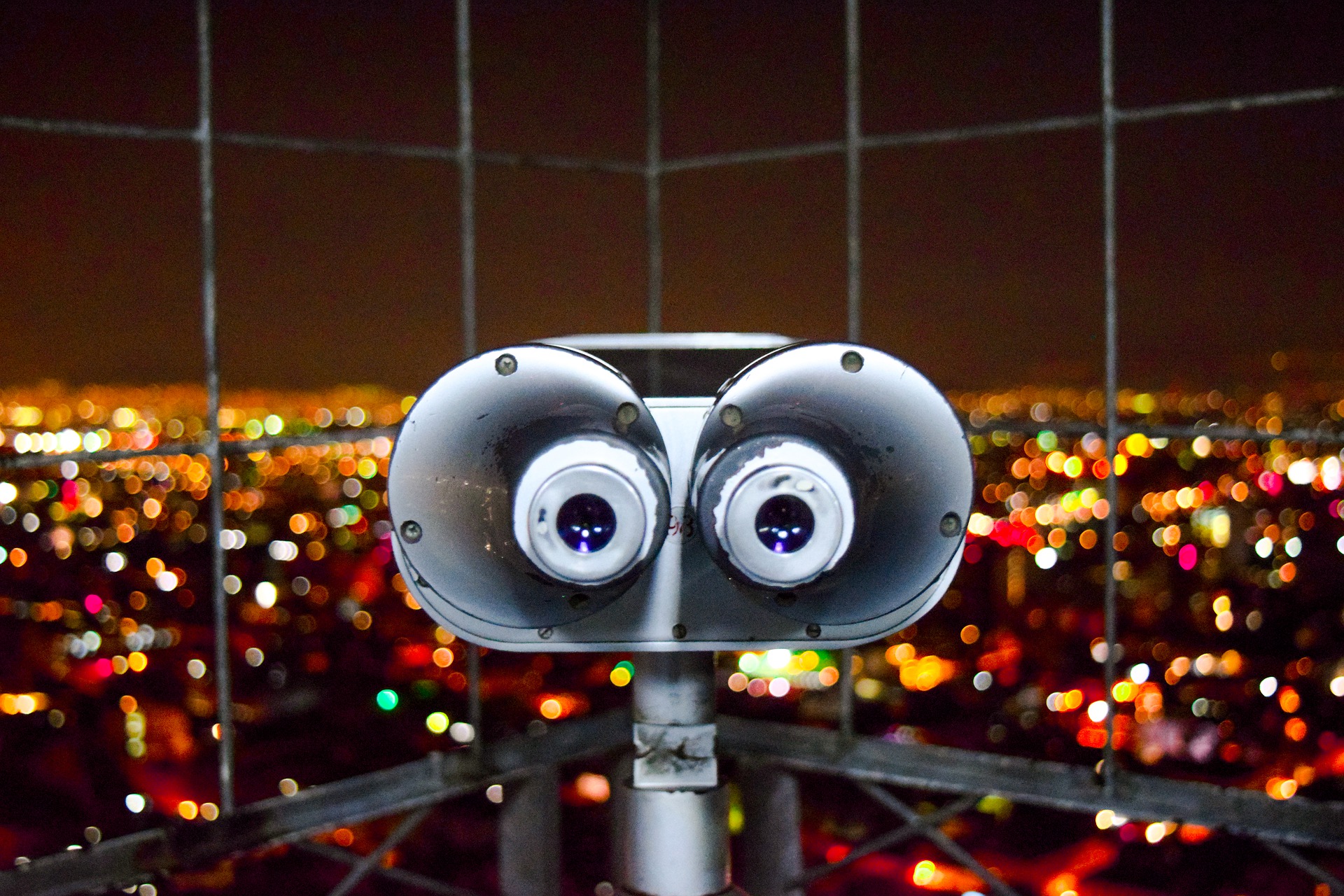
Important Safety Measures for Your Night Vision Device
To ensure your night vision binoculars, monoculars, and goggles maintain their high-performance level for a long time, you must observe the following safety measures:
- Store the night vision optical device in its case whenever it’s not in use.
- Don’t shake or drop the night vision device.
- Don’t point the lens of the device directly at any bright light (even at night).
- Switch it off during the day.
- Don’t touch the lenses with your hands (use the soft cloth that comes with the device).
- Don’t leave the batteries inside the device when storing or transporting the night vision binoculars.
- Unless it’s waterproof, don’t expose the night vision optics to water or moisture.
- Clean the lenses as often as possible.
- Read and follow the manufacturer’s instructions.
Frequently Asked Questions (FAQ)
Can Night Vision Binoculars Be Used in Daylight?
Yes, they can. But only a special pair of night vision binoculars. Most of them being digital models. You can easily read the instruction manual to know if binoculars can function in low light and daylight.
The digital night vision binoculars can also function in daylight because they use high-resolution sensors to cast images on their LCD screens. If you use night vision binoculars with intensifier tubes in daylight, you’ll end up with a damaged device, and you also risk harming the retina of your eyes.
How Far Can You See With Night Vision Binoculars?
The farthest you can see images with your night vision binoculars depends on different factors like the size of the object you’re viewing, the environment, and the residual light available. Additionally, image resolution determines the amount of details you can see.
As a result, a night vision device’s viewing distance varies a lot. You even get terms like identification distance and detection distance. The detection distance is how far off you can see something, while the identification distance is the distance at which you can conclusively see and determine what you’re seeing.
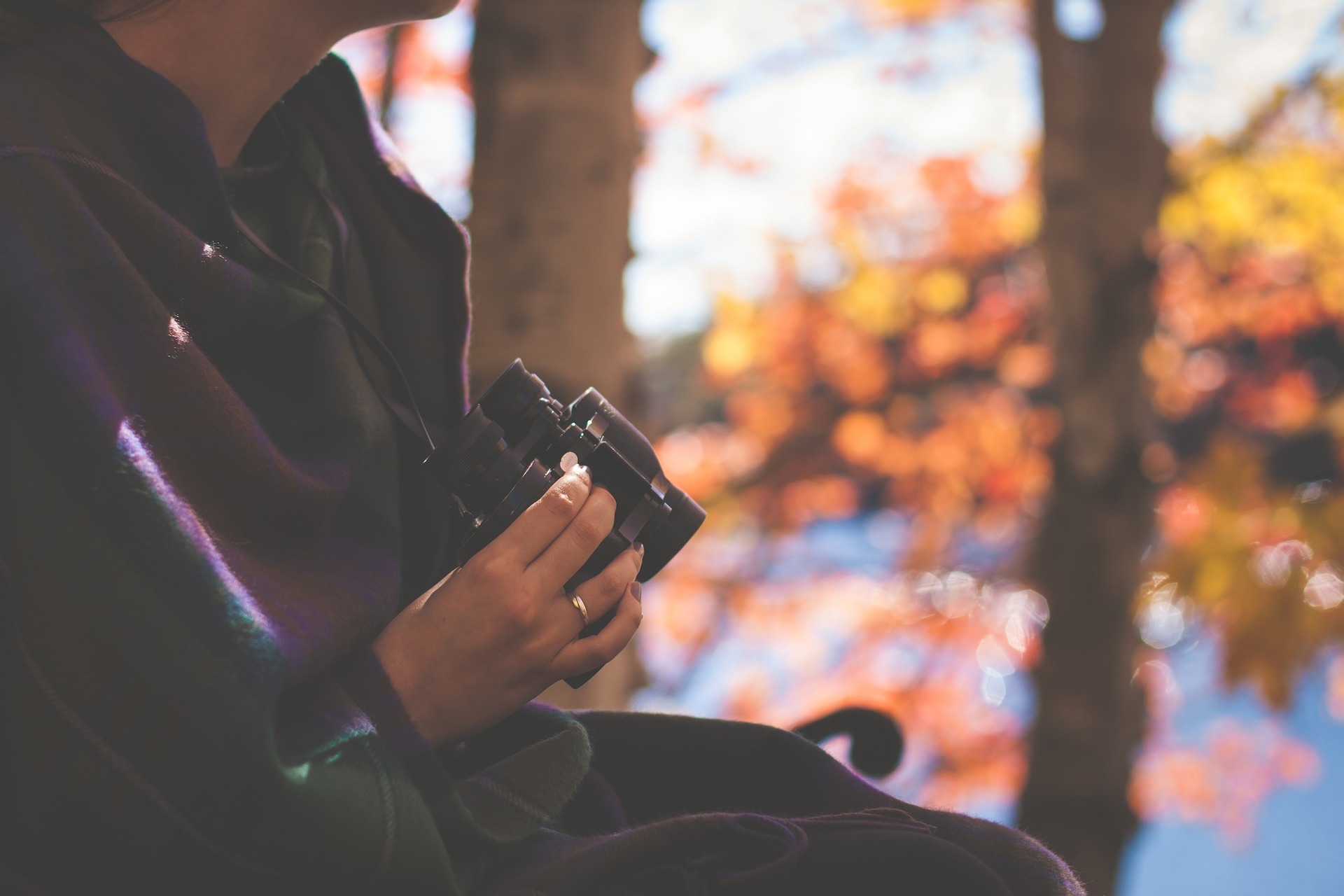
Conclusion
To conclude, our top choice for best night vision binoculars under $100 is the Ceagleeye 10x42 Binoculars . We prefer them because of their easy-to-use design, superior optical elements, and solid build that can withstand any harsh conditions.
They’re night vision binoculars that offer outstanding performance for different low light viewing purposes and should also last a long time.
Your night viewing adventure doesn’t have to be costly to be enjoyable. The budget optics listed above are more than capable of giving you a great experience. Take your time to pick the right one, and remember to follow the buying guide.









